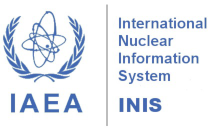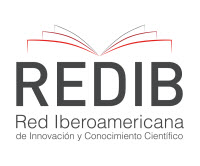CHF prediction in rod bundles using round tube data
DOI:
https://doi.org/10.15392/bjrs.v8i3B.697Palavras-chave:
critical heat flux, subchannel code, CHF tableResumo
The present work concerns the use of 1995 CHF table for uniformly heated round tubes, developed jointly by Canadian and Russian researchers, for the prediction of critical heat flux in rod bundles geometries. Comparisons between measured and calculated critical heat fluxes indicate that this table can be applied to rod bundles provided that a suitable correction factor is employed. The tolerance limits associated with the departure from nucleate boiling ratio (DNBR) are evaluated by using statistical analysis.
Downloads
Referências
KATTO, Y., “Critical Heat Flux”, Advances in Heat Transfer, vol. 17, Academic Press, Inc., New York, 1985.
TONG, L. S., Boiling Heat Transfer and Two-Phase Flow, John Wiley & Sons, Inc., New York, 1967.
TODREAS, N.E., KAZIMI, M.S., Nuclear Systems: Thermal Hydraulic Fundamentals. Hemi-sphere Publishing Corporation. New York, 1990.
COLLIER, J. G. & THOME, J. R., Convective Boiling and Condensation, 3rd ed., Oxford Uni versity Press Inc., New York, 1996.
TONG, L. S. & WEISMAN, J., Thermal Analysis of Pressurized Water Reactor, 3rd ed., Ameri-can Nuclear Society, La Grange Park, IL, 1996.
DOROSCHUK, V. E., LEVITAN, L. L., LANTZMAN, F. P., “Investigation into Burnout in Uniformly Heated Tubes”, ASME Paper 75-WA/HT-22, 1975.
DOROSCHUK, V. E. ET AL., “Tabular Data for Calculating Burnout when Boiling Water in Uniformly Heat Round Tubes”, Thermal Engineering, vol. 23, no. 9, p. 77-79, 1976.
GROENEVELD, D. C., CHENG, S. C., DOAN, T., “1986 AECL-UO Critical Heat Flux Lookup Table”, Heat Thermal Engineering, vol. 7, nos. 1-2, p. 46-62, 1986.
KIRILLOV, P. L. ET AL., “New CHF Table for Water in Round Tubes, Proceedings of the Fifth International Topical Meeting on Reactor Thermal Hydraulics”, NURET-5, (Salt Lake City, Sept. 21-24, 1992), p. 511-518, American Nuclear Society, La Grange Park, IL, 1992.
GROENEVELD, D. C. ET AL., “The 1995 Look-up Table for Critical Heat Flux in Tubes”, Nuclear Engineering and Design, vol. 163, p. 1-23, 1996.
GROENEVELD, D. C. ET AL., “The Effect of Fuel Subchannel Geometry on CHF, Proceed ings of the Fifth International Topical Meeting on Reactor Thermal Hydraulics”, NURET-5, (Salt Lake City, Sept. 21-24, 1992), p. 683-690, American Nuclear Society, La Grange Park, IL, 1992.
VELOSO, M. A. F. Análise Termofluidodinâmica de Reatores Nucleares de Pesquisa Refrigera dos a Água em Regime de Convecção Natural, Tese Doutorado, Faculdade de Engenharia Química, Universidade Estadual de Campinas, Campinas, SP, 2004.
FIGUETTI, C.F., REDDY, D.G., “Parametric study of CHF data. Thechinal Report EPRI-NP-2609”. Eletric Power Research Institute, Palo Alto, CA, vol. 3, parts 1 and 2.
ROWE, D. S., COBRA-IIIC: “A Digital Program for Steady State and Transient Thermal-Hydraulic Analysis of Rod Bundle Nuclear Fuel Elements”, BNWL-1695, Pacific Northwest Laboratories, Richland, WA, 1973.
VELOSO, M. A., “Determination of Spacer Loss and Turbulent Mixing Coefficients for Angra-1 Reload Fuel Assemblies, Proceedings of the 9th Brazilian Meeting on Reactor Physics and Thermal Hydraulics”.(Caxambu, MG, Brazil, Oct. 25-29, 1993), p. 302-306, Associação Bra-sileira de Energia Nuclear, Rio de Janeiro, RJ, 1993.
LEVY, S., “Forced Convection Subcooled Boiling Prediction of Vapor Volumetric Fraction”. Int. J. Heat Transfer, vol. 10, p. 951-965, 1967.
SMITH, S. L., “Void Fraction in Two-Phase Flow. A Correlation Based upon an Equal Velocity Head Model”, Proc. Inst. Mech. Engrs., vol. 184, no. 36, p. 647-664, 1969-70.
REDDY, D. G.; FIGUETTI, C. F.; MERILO, M., “Evaluation of Two-Phase Pressure Drop Correlation for High Pressure Steam-Water System”, ASME-JSME Thermal Engineering Joint Conference Proceedings (Honolulu, March 20-24, 1983), vol. 1, p. 251-259, The American So-ciety of Mechanical Engineers, New York, NY, 1983.
Downloads
Publicado
Edição
Seção
Licença
Copyright (c) 2021 Brazilian Journal of Radiation Sciences

Este trabalho está licenciado sob uma licença Creative Commons Attribution 4.0 International License.
Declaro que o presente artigo é original, não tendo sido submetido à publicação em qualquer outro periódico nacional ou internacional, quer seja em parte ou em sua totalidade. Declaro, ainda, que uma vez publicado na revista Brazilian Journal of Radiation Sciences, editada pela Sociedade Brasileira de Proteção Radiológica, o mesmo jamais será submetido por mim ou por qualquer um dos demais co-autores a qualquer outro periódico. Através deste instrumento, em meu nome e em nome dos demais co-autores, porventura existentes, cedo os direitos autorais do referido artigo à Sociedade Brasileira de Proteção Radiológica, que está autorizada a publicá-lo em meio impresso, digital, ou outro existente, sem retribuição financeira para os autores.
Licença
Os artigos do BJRS são licenciados sob uma Creative Commons Atribuição 4.0 Licença Internacional, que permite o uso, compartilhamento, adaptação, distribuição e reprodução em qualquer meio ou formato, desde que você dê o devido crédito ao (s) autor (es) original (is) e à fonte, forneça um link para a licença Creative Commons, e indique se mudanças foram feitas. As imagens ou outro material de terceiros neste artigo estão incluídos na licença Creative Commons do artigo, a menos que indicado de outra forma em uma linha de crédito para o material. Se o material não estiver incluído no licença Creative Commons do artigo e seu uso pretendido não é permitido por regulamentação legal ou excede o uso permitido, você precisará obter permissão diretamente do detentor dos direitos autorais. Para visualizar uma cópia desta licença, visite http://creativecommons.org/licenses/by/4.0/


























